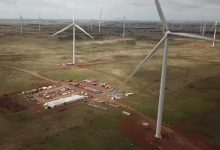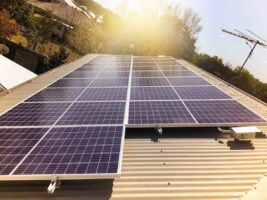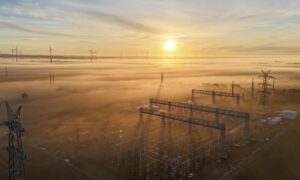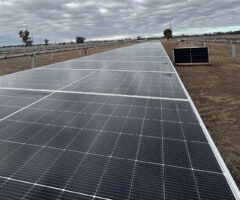The slump in new investment in large scale wind and solar projects in Australia has deepened, with just three new projects reaching financial close in the latest quarter, representing the lowest investment in dollar terms since the Clean Energy Council began compiling its investment confident index at the start of 2017.
The latest data reveals the full impact of the federal Coalition government’s “do nothing” policy on renewables, its obsession with gas, and its decision to largely ignore over the last half decade the need for grid planning.
While Liberal governments in NSW, South Australia and Tasmania are trying to pave the way for a rapid transition to renewables, and beyond, – as are Labor states in Victoria, Queensland and W.A. – the federal Coalition government’s indifference has been one of the main factors that has brought the national market to a halt.
“This fall in investment reflects the growing risks being placed on renewable energy developers across the country,” CEC chief executive Kane Thornton says. “The primary drivers for this fall … relate to the challenges associated with the grid connection process, unpredictable government policy interventions and underinvestment in network capacity creating congestion and constraints.”
The CEC data shows only 410MW of new capacity reached financial close in the second quarter of 2020, representing just $610 million of new investment – more than 50 per cent below the quarterly a average for the 2019 calendar year. This included the country’s biggest solar project to date, the 400MW Western Downs project being built by Neoen in Queensland. There were no new wind projects.
This was the lowest number of financially committed large-scale projects recorded since it began compiling its investment index in detail at the start of 2017 and the second-lowest level of new capacity. Jobs were also at a historic low. It’s notable from the graph above that the decline began after the appointment of anti-wind campaigner Angus Taylor as energy minister in late 2018.
The slump in investment also extended to the storage industry. Only one new battery project (in the Northern Territory) with a capacity of 35MW reached financial close in the quarter, and no new energy storage projects began construction or were commissioned. “This means that it is now more than a year since a large- scale storage project was commissioned in Australia,” the report says.
It’s the grid connection problems that loom large. Even though the Australian Energy Market Operator has invested huge amounts of energy in laying out a 20-year blueprint for what it says will be the world’s fastest energy transition, existing projects are finding themselves blocked by current grid congestion.
The biggest solar projects to be built in NSW face major cutbacks in the south-west of the state, three big wind and solar projects in north Queensland have had their output reduced to zero for much of the last month, and the new Dundonnel wind farm in Victoria has had its commissioning delayed, due to unspecified grid issues.
“The obstacles around grid connection are creating substantial challenges for renewable energy developers, and in turn, spooking clean energy investors,” Thornton.
“At the moment, projects are experiencing significant and often unanticipated delays through the grid connection process, which is having a big impact on the commercial terms of these projects and increasing risks for investors.
“Network congestion and system-wide challenges are contributing to unanticipated changes including to technical requirements, creating uncertainty about next steps and timing of resolution for project developers.
“This is weighing on confidence for new investment in the sector, at a time when we need more clean energy investment to boost jobs and regional development and ensure sufficient new generation is in place before old coal generators retire.”
Thornton says that AEMO has recognised the issues associated with grid connection, and the CEC is working with it to explore solutions to improve the connection process.
The problems have already taken a wider toll on the industry. Contractors have gone bankrupt or have left the industry, offshore investors have taken big losses, and in some cases quit the country. Anecdotal evidence suggests the interest of other investors is hanging by a thread, with their eyes being turned to more prospective markets in the Americas and Asia, and boom in offshore wind in Europe and elsewhere.
On a more positive note, the CEC report notes that seven projects were commissioned in the second half of 2020, bringing on line 583MW of new capacity.
These projects created 900 new jobs throughout their construction and commissioning. However, this is also likely to slow in the coming quarters as only two new projects began construction during the quarter. This represents the lowest amount of new capacity under construction in a quarter since the index began at the start of 2017.
Of the three projects that reached financial commitment during the quarter, one was in Queensland and two were in NSW. This was also the first time since the tracker began that less than three states or territories had new projects reach financial commitment.
“AEMO’s 2020 Integrated System Plan (ISP) has delivered a clear roadmap for development of the energy system. To deliver this, we need to address the current grid connection challenges in order to build investor confidence for new clean energy generation,” Thornton says.
“Australia has enormous opportunity to leverage renewable energy as part of a nation-building COVID-19 economic response, creating jobs and the infrastructure to support Australia’s future. This requires much needed regulatory reform, sensible energy policy, rapid improvements to grid connection processes and investment in the transmission backbone and energy storage.”
See also: Is AEMO’s “step change” scenario of 94% renewables really a stretch target?









